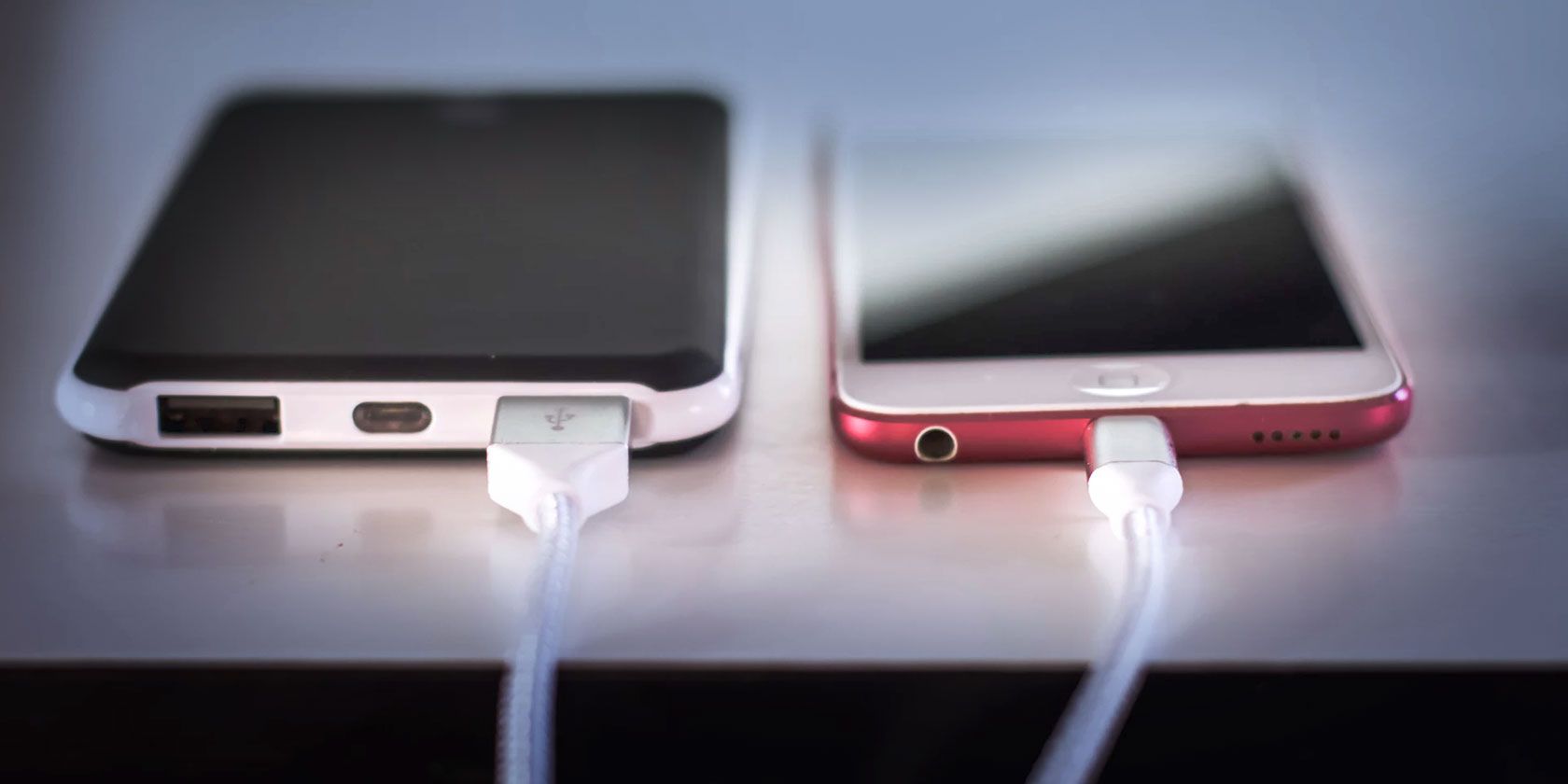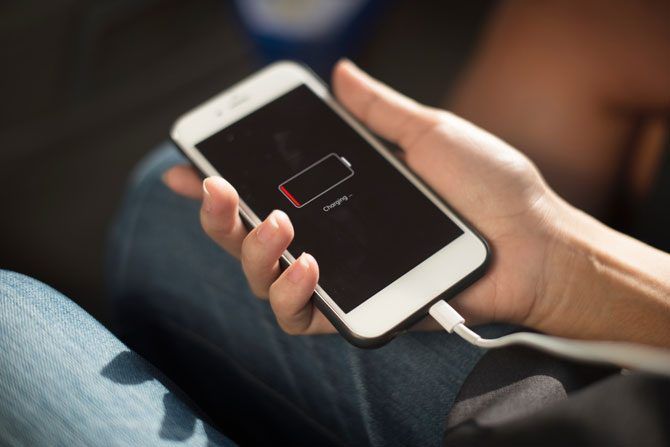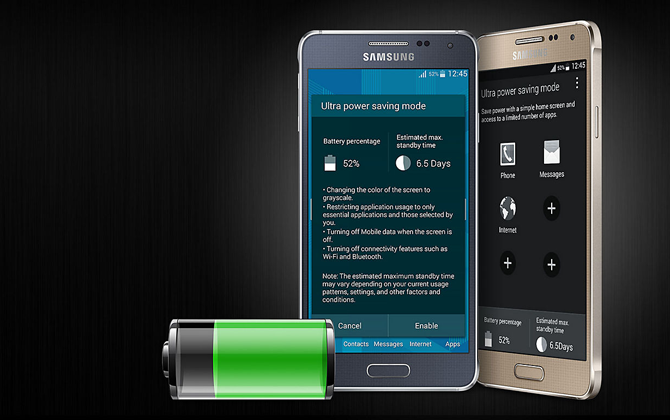
There are many myths on how to treat your smartphone, tablet, or laptop for battery longevity. The most common ones are to regularly drain your phone to 0%, and to always charge it to 100%. You might also have heard that your battery has a memory, and that you should never partially charge the cell.
This is all completely wrong, based on older battery technology which is no longer found in most smart devices. Here’s the truth about maintaining smartphone batteries.
Charge Cycles Determine Battery Life Expectancy

You want your tech to be usable for as long as possible; warranties are invalid if you fiddle with your device. Getting the most out of your battery is increasingly important as most people are uncomfortable with changing the default battery.
Rechargeable batteries will slowly lose some capacity over time, even if you don’t use them. Through regular use of your device, you will usually notice this capacity drop after the first year. While for most of us, getting through a single day on a single charge is impossible before the two-year mark.
“Battery charge cycles” is how manufacturers specify the life expectancy of a battery. A charge cycle is defined as the battery being charged from 0% to 100% and then discharged back down to 0%. The number of expected charge cycles will tell you how many full cycles the battery can handle before it noticeably starts to lose capacity.
Lithium-Ion (Li-Ion) batteries are used in the majority of today’s rechargeable tech. You can find some form of Lithium-Ion batteries in mobile phones, vaporizers, laptops, Teslas, and even chainsaws. The most popular Li-Ion battery is the 18650. This battery can take between 300 and 500 full charge cycles before being reduced to roughly 75-80% capacity, when major flaws start developing.
The King of Rechargeable Batteries: Lithium-Ion
Smartphones and tablets use a variation of the Li-Ion battery, Lithium-Ion Polymer (Li-Poly). This version of Lithium-Ion batteries is safer, smaller, and charges faster. Otherwise, the same lifespan rules apply to Li-Poly as with any Li-Ion battery.
One of the factors that increase the speed of Li-Ion battery degradation the most is charging it past 80% and letting it drop below 20%. The closer to 100% you go, the faster the chemical reaction that can create flaws will happen. If you have a Tesla, they curb the charging by default, don’t worry!
As the 300-500 number of charge cycles is based on cycles, and your battery degrades fastest below 20% and above 80%, you can extend its lifespan by avoiding extremes. Partial charges and discharges that combine to 100% are counted as a single full cycle. So if you instead partially charge and discharge your phone between 20% and 80%, research says you could get 1,000 full cycles (almost 3 years of daily charges) or more before hitting a noticeable drop in capacity.
Don’t Play Games While Your Phone Is Charging
Temperatures below 32 Fahrenheit (0 Celsius) and above 158 Fahrenheit (70 Celsius) will degrade your Li-Ion battery faster. Don’t leave your device in your car on a hot day and don’t put it in your freezer (or in the snow).
Leaving your smartphone plugged in while using it for anything intensive, like watching YouTube, or playing a game is a big no-no. This high-voltage and high-temperature state is the worst situation for your battery to be in.
Besides this, mini-charge-cycles can affect your battery negatively. Some parts of the battery will go through more charge cycles than others, which will age the battery. This could lead to battery cell damage, which can cause your phone to die even if your battery displays as charged.
Similarly, try to avoid the use of fast-charging technologies overnight, as this can induce a similar high-temperature situation. Fast-charging technology is not intended to be used to charge your phone from empty to full, but rather for short 20-30 minute charge periods. Li-Ion batteries will also degrade faster at 100%, so the less time your battery is fully charged, the better.
Samsung seems to be alone in that they have added a simple way to disable fast cable charging in the Samsung battery settings. This is available for both tablets and phones, so to get the longest lifespan out of your battery, you should disable this.
Use Software to Control Your Charging Habits
One way to take advantage of partial charges would be to stay close to your phone when it’s charging. However, alarms can be considered more efficient.
For Android, Accubattery displays tips to improve your battery’s health and allows you to set battery percentage alarms. Options to set up alarms for iOS seems to be lacking, but for 10$, FruitJuice has a lot of features to help extend your battery life on macOS.
Some laptops will have BIOS settings available where you can configure the maximum battery charge percentage. Lenovo has made this easier for Windows with their Lenovo Energy Management software. By installing this and selecting Optimize for Battery Lifespan, your laptop battery will stop charging at 80%.
Don’t Charge Your Phone Overnight
Don't put your cellphone under a pillow when sleeping or when charging your device.Please share this tip and b safe! pic.twitter.com/uwD3PXgVQf
— NYPD 33rd Precinct (@NYPD33Pct) February 16, 2016
In general, you should try to avoid charging your phone overnight, and instead unplug your phone when you go to bed, and charge it after you wake up. During the time it takes you to shower and eat breakfast you should reach a comfortable charge percentage.
Definitely also avoid leaving your phone under your pillow while charging it. Besides the real risk of a fire, the lack of airflow can cause a high-temperature state, which will increase the battery degradation.
We’re not saying to only charge your phone in the morning. Realistically with partial charges, you will also charge it during work or in the evening. However, as much as you can, avoid going over 80%.
Although Li-Ion batteries don’t have a charge capacity memory, there is some research that says that you should fully discharge your battery at least once every 30 cycles. Your hardware can form a digital memory which will make the charge gauge inaccurate if the battery is never fully discharged. For most people this will happen naturally at least a few times a month, so we don’t recommend going out of your way to fully discharge your battery.
That said, if your phone dies randomly even though the battery gauge says you have charge left, it could be caused by miscalibration (or a faulty battery). If calibrating your battery (here’s how to do that on a MacBook) doesn’t fix the issue, then faulty batteries should be a valid claim if your battery is still under warranty.
Reduce the Battery Drain on Your Device

Beyond watching the temperature and charge percentage of your device, you can further extend the battery life by reducing how often you need to charge it. Fewer charges mean fewer cycles, which means a longer life for your battery and your device.
Reducing the screen timeout duration and turning down the brightness settings will have the biggest impact. There is a reason why tests use Screen-on-Time (SoT) when testing for battery life on smartphones. Apple has introduced some useful features that use SoT to help curb your phone addiction in iOS 12.
In addition, most smartphones and some laptop operating systems will have a form of battery saver option. Turn this on when possible. There are simple steps to configure your Windows 10 device to optimize your battery life without extra software.
Battery saver will rarely affect your experience of the device negatively, especially when you are not actively using the device.
Disabling signals like Bluetooth, GPS, Wi-Fi, and mobile internet are common tips to save battery life. These days Bluetooth and Wi-Fi signals are pretty battery efficient. Disabling GPS and the mobile internet signal can reduce the battery drain noticeably on most devices.
Tips for Extending the Lifespan of Your Battery
In the short to medium term, you may not notice much difference. However, you’ll be happy when your phone still survives a day on a single charge after a year. Following these tips, your battery should not hit 80% charge capacity until after 2+ years of use.
- Use partial charges to keep your battery between 20% and 80%. You can use software to notify you when your battery reaches 80% so you can unplug it.
- Reduce the amount of time your battery is kept at 100% charge by not charging your phone at night. This is when the battery will degrade the fastest.
- Avoid using fast-charge for longer periods.
- Keep your device at room temperature, and avoid extreme temperatures.
- Where possible, set the maximum charge of your battery to 80%.
- Reduce the battery drain of your device by turning off unnecessary services. Use battery saver to get even longer use from every charge.
- If you are storing batteries unused for longer periods, discharge them to 70% and store them somewhere cool. Storing batteries at full charge will cause them to deteriorate faster.
If all that isn’t enough, the pressure to keep upgrading our devices has a real impact on the environment. In fact, as of 2016, we only recycle about 12.5% of our annual electronic waste. By getting longer use from your tech, you can pat yourself on the back for helping save the planet.
Read the full article: Why You Shouldn’t Leave Your Phone Plugged in Overnight
from MakeUseOf https://ift.tt/2qQDFbZ

No comments:
Post a Comment